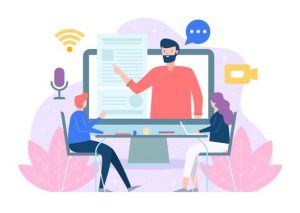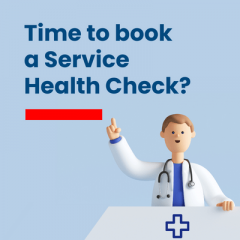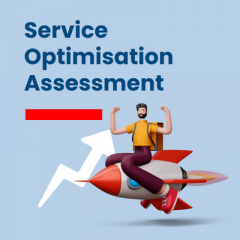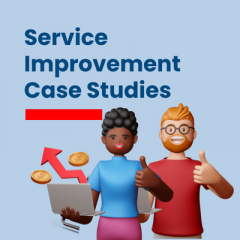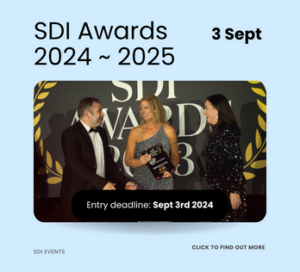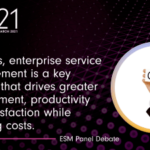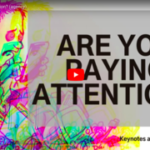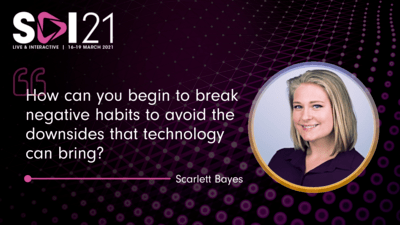
by Scarlett Bayes, Senior Research Analyst, SDI
If you’ve seen the documentary, The Social Dilemma, you’ll be aware of the dangers that social media and technology can have. While this doesn’t directly relate to ITSM, it is a people issue that should be. It affects your customers, your employees, and yourself. The data laid out in the documentary is harrowing at times, yet social media and technology has become such an intrinsic part of our everyday life that it can seem like we can’t live without it.
One of SDI21’s keynotes speakers, Scott McArthur, talks passionately about this. Watching his TEDTalk from a couple of years ago, he outlines how our attention, our time, is a commodity and how we need to take back ownership of this from tech companies, particularly in social media, who see our attention as a means for profit.
Obviously, technology as a whole has been a central topic in ITSM for many years. From what’s accessible to us today, to how it affects the service we provide, to what is on the horizon and how it could impact the industry. SDI Insight showed that the majority of IT professionals feel like technology has improved their working lives, and despite what some may think, most aren’t worried that technology will cause redundancy of their role.
So yes, while technology can improve our lives, both professional and personal, it can also be distracting and potentially damaging. For our customers, they can become frustrated with the technology provided by IT support, physical or virtual, and it can impact their experience, productivity, and even their mood. How can you, as an employer or employee, begin to break negative habits to avoid the downsides that technology can bring?
Limit phone time
It is crucial to limit your time on devices to establish better habits and have a better relationship with technology. You may even want to consider making an actual schedule for when to use them. That could include staying offline (as much as your work allows) for a day each week or only using technology between 10 a.m. and 6 p.m., for example. Setting rules to limit device time can help you set boundaries between your personal and professional lives and ultimately find a better balance.
Take regular breaks
Regular time away from the desk can help you to recharge and refocus. Whether you go for a short walk, or just walk to the kitchen to make a brew, taking your eyes away from a screen for a short while every couple of hours can have a positive impact. By using our devices responsibly and being more cognisant of the impact they have on us, we can figure out how to make them work for us and help us to improve our personal performance and take advantage of more opportunities.
Manage your notifications
Notifications make it so easy to pick up your phone in the middle of a task and distract you from what you were doing. According to a study published by Gloria Mark of the University of California, it takes about 23 minutes to get your focus back onto a task before the interruption. Even a short disruption can completely derail you and reduce your productivity.
To take control of these distractions, skim through your app notifications and stop notifications for any non-messenger apps you just don’t need. Chances are there’s quite a few that pop up frequently and are a complete waste of your attention.
Recognise and remove toxicity in your feed
Social media can have a real impact on our mental wellbeing. Despite the positive content, the negativity you consume becomes noise that feeds into our subconscious. If you aren’t careful, social media can send you through a wash cycle of negativity before you even realize what hit you.
Forbes recommends taking these steps to beat the algorithm and reduce or distance yourself from toxicity on social:
- Unfollow toxic accounts if you can (personality, acquaintance you don’t need to follow)
- Mute/Block accounts and topics that you realize don’t add value to your life.
- Use “Show this less often” when it’s an option for ads and posts.
- And “Like” or thumbs up to show that you like something and want to see more of it when it’s positive or of value.
Be the change you want to see
After purging toxicity from your feed, go one step further. Be part of the solution and take time to seek out, create, and share more positive content. Technology is an inseparable part of most of our lives, so rather than avoid it, embrace the opportunity. By doing so, you’ll be able to better manage your use of social media, as well as set an example that increases productivity and positivity for those around you. Taking a break from time to time is useful, but it takes a fair amount of work to improve your relationship with tech and begin to see those positive changes in your life.
Join us at SDI21 to hear Scott McArthur talk about the attention economy, followed by a panel of industry leaders discussing the challenges presented by modern technologies and how to navigate the social-virtual world.



